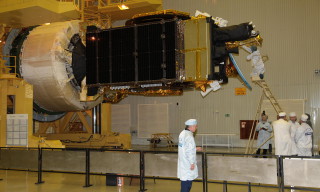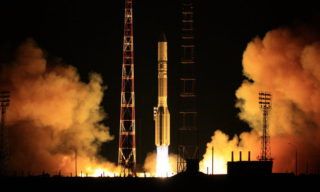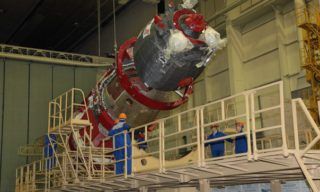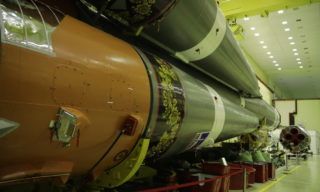According to the results of 2024, Russia has entered the top three countries developing and operating remote sensing satellite constellations. Our country launched 68 spacecraft for this purpose, which brought it to third place. The first and second positions were occupied by the USA and China, which sent 83 satellites into space each. A total of 303 Earth remote sensing satellites were launched worldwide last year, of which only nine failed to reach their target orbit.
Compared to 2023, the global rate of successful space launches increased by 16% – 253 launches in 2024, with every third rocket carrying Earth’s remote sensing satellites. The total number of such satellites launched in 2024 amounted to 303. Of these, only nine failed to reach the target orbit – these are Chinese Yunyao series satellites lost as a result of the failed launches of Lijian-1 and Hyperbola-1 rockets.
Nevertheless, despite these two failures, China still managed to take second place among the countries developing and operating remote sensing satellite constellations. By the end of 2024, it had launched 83 satellites into orbit, the share of which amounted to 28% of the total number of launched satellites. Traditionally, the United States was also among the leaders, occupying the first line (like the PRC, the Americans sent 83 satellites into space, with a share of 28%).
However, as observers have noticed, both China and the USA have reduced the total number of Earth observation satellites launched in 2024 compared to the previous year. In the former case, such statistics are due to a crisis at Chang Guang Satellite Technology (CGST), a satellite company that is not just the leader of commercial remote sensing in the PRC, but also operates one of the world’s largest satellite constellations, Jilin.
At the same time, CGST launched into Earth orbit its first radar satellite Jilin-1 SAR-01A (which receives Earth remote sensing data with sub-meter resolution), and optical satellite Jilin-1 Gaofeng-05B-01, which has a record resolution of 0.2 m/pix. The Chinese company also built 17 Yunyao-1 satellites to form China’s first commercial “constellation” of weather satellites.
As for the US, the slowdown in the development of remote sensing in the country is also due to the company. This is Planet Labs, the American leader in civilian remote sensing of the Earth in terms of the number of satellites launched. In 2024, it sent 37 vehicles into space, while in 2023 it sent 73. Last year, there was only one launch on its behalf – on August 16, when 36 SuperDoves and the Tanager greenhouse gas monitoring satellite were delivered into orbit.
At the same time, the United States tried to take the lead, if not in quantity (although it was already in first place), then in quality. The American company Maxar Technologies finally launched the new-generation WorldView Legion satellites (their launch has been regularly postponed since 2020), and Capella Space and Umbra Space put into orbit three Capella and two Umbra satellites, respectively. NASA launched two PREFIRE cubesats in 2024 to explore the Arctic and Antarctic, the PACE satellite to study ocean biosystems, and the GOES-U large weather spacecraft.
Russia also made significant launches in the field of remote sensing of the Earth. Last year Roscosmos put into orbit two satellites Resurs-P No. 4 and No. 5 for ultra-high resolution imaging of our planet, radar Kondor-FKA No. 2, two space weather monitoring satellites Ionosphere-M No. 1 and No. 2, and Meteor-M No. 2-4.
A total of 68 satellites were launched, bringing the Russian Federation to third place with a 23% share. Not least, the statistics were influenced by private initiatives and scientific and educational programs. For example, Sputniks Group of Companies sent three Zorky-2M satellites and 44 SITRO-AIS automatic ship identification satellites with the support of Roscosmos.
Another Russian private company, Stealthspace, launched the Stealthat space system technology demonstrator satellite in 2024. The second satellite of this series – “Stilsat-2” – will be put into orbit in 2025. In general, the plans of private companies for the current year are quite extensive: Sputniks will expand the Zorky-2M constellation and launch the Kinosputnik sub-meter resolution Earth remote sensing satellite.
The intentions of Roscosmos are also known. The State Corporation is going to launch two Ionosphere-M satellites to monitor the heliogeophysical situation, a radar satellite Obzor-R, four optical cubesats Grifon, two Stork-2T satellites for stereoscopic imaging in the optical range, and two hydrometeorological satellites – Elektro-L No. 5 in high orbit and Meteor-M No. 2-5 in medium orbit.



















